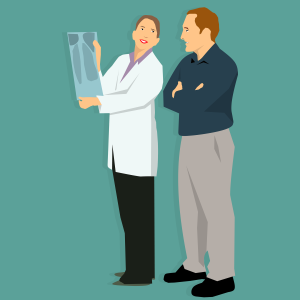Chronic pain is a complex problem consisting of many variables that affect your perception of it. Additionally, we now know that unpleasant mental input is processed in a similar manner as physical pain. Applying simple solutions to such a multi-layered problem can’t be and isn’t effective. The DOC (Direct your Own Care) program is a framework that breaks down the pain experience into its component parts. It enables you to develop our own game plan around your unique set of issues and circumstances. You then can create a partnership with your medical providers to solve your pain, as it’s a largely self-directed process.

Sources of pain
With pain in any part of the body, there are potentially three components of the problem:
- Structural problems – identifiable problems with matching symptoms
- Non-structural issues – soft tissues such as ligaments, discs, fascia, etc. that cannot be seen on a test
- The central nervous system is always a factor and can independently create symptoms
The first step is for your physician and you to get a clear idea about whether there is possible structural problem that should be surgically addressed. If there is a correctable problem, then you need to decide whether you pain is severe enough to undergo surgical intervention. If it is, then we have discovered that it is critical to spend a few months optimizing the outcome by normalizing sleep, decreasing anxiety, stabilizing meds, etc. We call this “prehab” or rehab before surgery. If the pain is not severe enough to warrant the risk of surgery or the problem is not structural, then surgery is off the table.
Overview
The DOC program is organized around the following variables:
- Education
- Sleep
- Stress management
- Medications
- Goal setting/vocational issues
- Physical conditioning/ rehabilitation
- Family dynamics
The central nervous system
You might notice that the first five of the categories, either directly or indirectly, affect the central nervous system. Improving sleep will decrease the perception of pain and improve your sense of well-being. Stress is an obvious issue regarding the central nervous system. Everyone has stress and most of us have a lot of it without ever being taught effective stress-management skills. The additional stress of chronic pain is a major problem. Medications are used to decrease the pain on a short-term basis to help improve function. Education and goal setting will decrease your anxiety and frustration.

Physical considerations
Rehabilitation of the soft tissues and general care of your physical health is an important step. However, it is necessary to first calm down the central nervous system before they can be adequately addressed. Otherwise, when painful soft tissues are aggressively manipulated, there will be an exaggerated pain response. What exactly is done within each category is not as important as having ALL of the categories successfully defined and treated. Fighting a forest fire-your pain
You will already have been through many of the treatments that will be described. However, it is the self-directed structured combination of these variables that will make an impact on your pain and quality of life.
